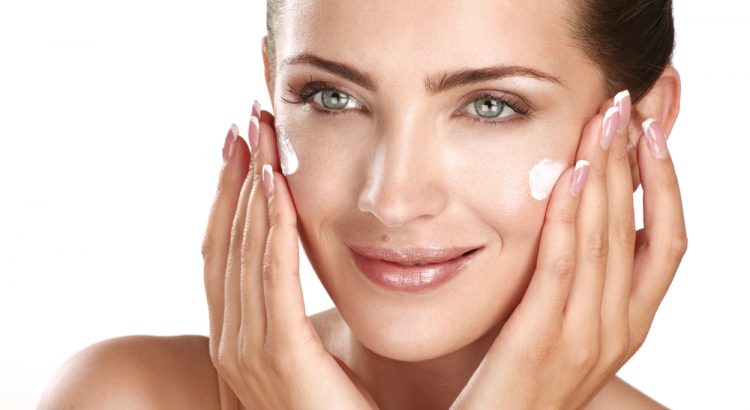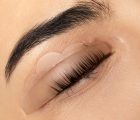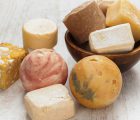 Regardless of the type, every skin needs proper moisturizing. That’s why a moisturizing cream is one of the most popular cosmetics of all times. In fact, every cream can moisturize the skin because they all contain moisturizing ingredients in an adequate concentration according to a given skin type. Despite that feature, not every cream bears the name ‘moisturizing’. What are the effects of a moisturizing cream and what ingredients carry the moisturizing qualities? Let’s find out!
Regardless of the type, every skin needs proper moisturizing. That’s why a moisturizing cream is one of the most popular cosmetics of all times. In fact, every cream can moisturize the skin because they all contain moisturizing ingredients in an adequate concentration according to a given skin type. Despite that feature, not every cream bears the name ‘moisturizing’. What are the effects of a moisturizing cream and what ingredients carry the moisturizing qualities? Let’s find out!
Moisturizing creams – effects
Lack of regular skin moisturizing reflects on its condition and appearance. Although all creams consist of moisturizing ingredients, only some of them include that in the name of the product. The term ‘moisturizing cream’ refers to its most important function which means it aims to restore the proper water balance in the skin. Contrary to a common view, a moisturizing cream does not introduce water into the epidermis but limits its evaporation. Moisturizing is based on strengthening skin barriers that hinder the evaporation of water, and improving the ability to bind it in the skin. What’s more, moisturizing creams contain little fat phase, therefore, they are absorbed quickly. In addition, after the application, the skin immediately becomes soft, smooth and firm.
The basic moisturizing ingredients contained in creams
Hyaluronic acid
Hyaluronic acid exists in every living organism. Along with collagen and elastin, it belongs to the group of glucosaminoglycans that build the skin’s structure. Nearly half the entire hyaluronic acid that appears in the human body, is located in the dermis and intercellular areas. With age, its amount decreases and so does the water. The large size of the hyaluronic acid particles prevents it from getting inside the skin – even the so-called small molecule hyaluronic acid reached only the epidermis. Even though, hyaluronic acid is considered one of the most effective moisturizing agents. Its particles don’t only leave a water film on the skin surface but also work in the epidermis. Once they get through the upper part of the epidermis, they bind water in it. One particle of hyaluronic acid is able to bind up to 250 water particles.
Collagen
Collagen is a protein that appears in the connective tissue and is responsible for the resilience and elasticity of the dermis. In comsetics, you will encounter collagen hydrolyzate, which forms a hydrophilic film on the skin to prevent water loss.
Glycerin
Glycerin is a trihydric alcohol that penetrates the intercellular space through the stratum corneum. In cosmetics, it can be used as a moisturizing substance or emollient that prevents the skin from drying out. Glycerin moisturizes the skin from 3 to 25 percent, and at a concentration above 25 percent it dehydrates it.
Vaseline
Vaseline is a mixture of hydrocarbons and at the same time, it’s an emollient that softens and smoothes the skin. In addition, it creates a protective film on its surface, through which moisture does not evaporate, preventing it from drying out.
Paraffin
Paraffin is made of crude oil. It creates a protective film on the surface of the skin that prevents moisture from evaporating. It is not a sensitizer, because it contains the same hydrocarbons that are present in the cellular cement.
Squalene
Squalene is a molecule from the group of hydrocarbons. It occurs in seborrhoea and in vegetable oils, especially in olive oil. It has a bactericidal effect and protects the skin against water loss.
Silicones
Silicones are organosilicon polymers. They cleanse the skin of fat and form a durable, moisture-impermeable film on it, while not interfering with gas exchange.
Chitosan
Chitosan is a derivative of chitin. In cosmetics, it occurs in the form of lactates, acetates, and citrates. It leaves a flexible, waterproof film on the skin.
Urea
Urea is a product of protein metabolism that occurs in urine and in sweat. Its action is strictly related to its concentration. If the latter is lower than 10 percent, the urea has a moisturizing effect. More specifically, it draws water to the cells and increases its amount in the stratum corneum.
Propylene glycol
Propylene glycol has found a wide application in moisturizing cosmetics, because it creates a non-drying film on the skin that does not leak water. Currently, it is rarely used because it can penetrate the skin and accumulate in the liver.
Ceramides
Ceramides are chemical compounds from the group of lipids and at the same time the basic components of intercellular cement. With age, their number decreases, which weakens the protective function of the skin and accelerates the process of water evaporation. Ceramides contained in creams complement the naturally occurring ceramides, and as a result, restore the proper moisture level to the skin and hinder the evaporation of water.





Leave a Reply